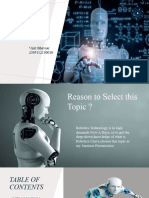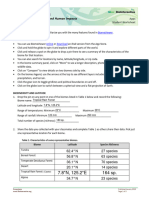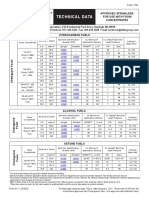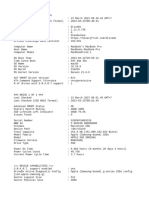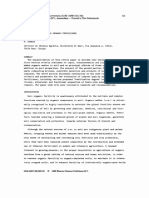0% found this document useful (0 votes)
27 views2 pagesIntro To Robotics
Robotics is an interdisciplinary field that integrates mechanical engineering, electrical engineering, and computer science to create robots that automate tasks and enhance efficiency across various industries. The document outlines the types of robots, their components, programming languages, AI applications, and the challenges faced in robotics, as well as emerging trends and guidance for beginners in the field. Key applications include manufacturing, healthcare, agriculture, military, and space exploration.
Uploaded by
joeyCopyright
© © All Rights Reserved
We take content rights seriously. If you suspect this is your content, claim it here.
Available Formats
Download as TXT, PDF, TXT or read online on Scribd
0% found this document useful (0 votes)
27 views2 pagesIntro To Robotics
Robotics is an interdisciplinary field that integrates mechanical engineering, electrical engineering, and computer science to create robots that automate tasks and enhance efficiency across various industries. The document outlines the types of robots, their components, programming languages, AI applications, and the challenges faced in robotics, as well as emerging trends and guidance for beginners in the field. Key applications include manufacturing, healthcare, agriculture, military, and space exploration.
Uploaded by
joeyCopyright
© © All Rights Reserved
We take content rights seriously. If you suspect this is your content, claim it here.
Available Formats
Download as TXT, PDF, TXT or read online on Scribd
/ 2




































